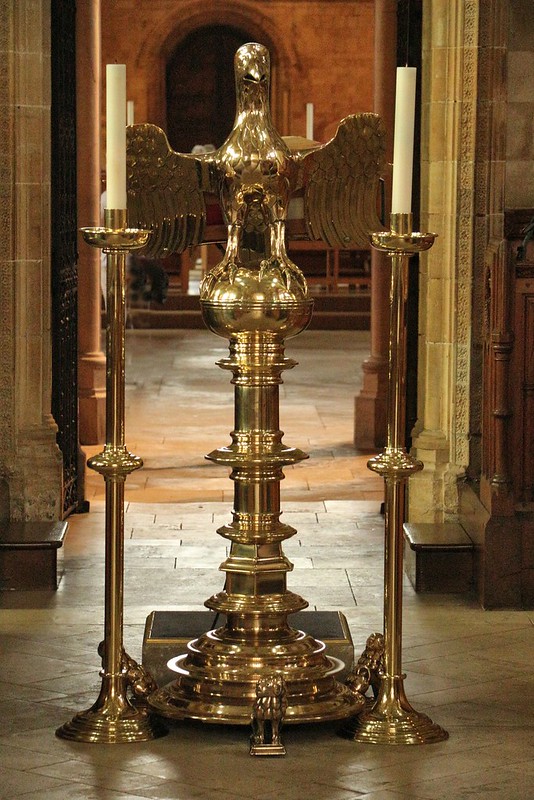Stained glass appears to have suffered particularly in the Civil War, although some figures may have been some decapitated in the sixteenth century - the argument being that it was too expensive to replace all the windows in a parish church. In the seventeenth century such constraints did not work. William Dowsing in East Anglia managed to destroy vast amounts of glass, and today only fragments survive as at Long Melford in Suffolk of what was once a rich decorative tradition.
The Last Judgement in the west window of Fairford Church
Image:letstourengland.com
There are two useful online pieces about the church windows at Church of St Mary - Fairford, England - Sacred Destinations and at Treasures of Fairford - Victoria and Albert Museum
Elswhere the terms of surrender in the Civil War sometimes prohibited vandalism in churches as at York where the saving of the Minster glass and much else in the city churches is attributed to the parliamentarian gneral Lord Fairfax, and in Oxford where the colleges were off limits to iconoclasts.
Metal work takes a bit effort more to destroy it, but melting it down is very tempting, especially if it is silver or gold. Bronze, or latten, is a bit more likely to survive.

The Eagle Lectern from Newstead Abbey now in Southwell Cathedral
Image: Blue Pelican on Flickr
The brass eagle lectern was made at Tournai in the Low
Countries in 1503 for Prior Ralph Savage of the Augustinian house of Newstead Abbey in
Nottinghamshire. At the dissolution of the monasteries it was hidden in the lake at the abbey and only rediscovered some 250 years later when the lake was
drained. It was auctioned by the 5th Lord Byron, great uncle of the
poet, and acquired for Southwell Minster in 1805 by Sir Richard Kaye, then
Dean of Lincoln.
Altar plate was too tempting and seized by rapatious governments at the dissolution of the monasteries or in the Edwardian period. Other than some chalices there are few survivals. Here are three, which survived by being abroad, or being dropped into a lake:
The Gloucester Candlestick
Image:vam.ac.uk
There are online articles about the candlestick at Gloucester Candlestick and, from the Victoria and Albert Museum's own website, at The Gloucester Candlestick
The Ramsey Censer circa 1325
Found, together with its incense boat, decorated with ram's heads, indicating its proveneance, in the draining of Whittlesey Mere in 1850. Now in the Victoria and Albert Museum
Image:yaxley.ccan.co.uk
There is an article with more photographs from the Victorian and Albert Museum website at The Ramsey Abbey Censer and Incense Boat
A piece which survived by going abroad, and which reappeared, but without a history, from somewhere in central Europe after the Second World War is the mid- twelfth century ivory Bury St Edmunds Cross.

The Cross with what is believed to be the original corpus, which is now in a museum in Oslo
Image: tumblr.com
Image: tumblr.com
I have posted about this piece, with more illustrations, in The Bury St Edmunds Cross.
To be continued



2 comments:
Have you read Thomas Hoving, 'King of the Confessors: The Quest for the Bury St Edmunds Cross' (1981)? Good read, by the person who found the Cross and who later became director of the Met, but I understand not entirely reliable ...
I have read the Hoving book, and found it eminently dislikeable in its style, and indeed the failure of the BM to acquire a national treasure. I agree it has a lot of interest about the Cross itself, but panders to modern susceptabilities too much!
Post a Comment